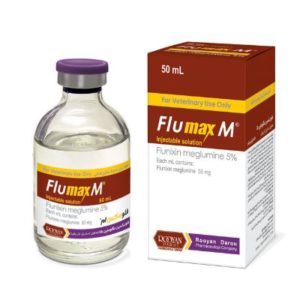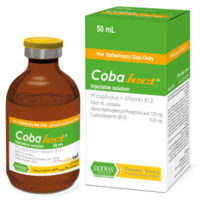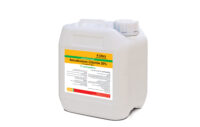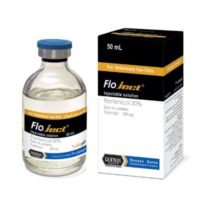
- - animals:
- - type:
- anti inflammatories
- - usage:
- injectable sterile solution
- - manufacturer:
- Rooyan Darou
- - Packaging:
- 50 ml vial
Product properties
Composition
Each ml contains 50 mg Flunixin (meglumine)
Mechanism of Action:
Flunixin like other NSAIDs (nonsteroidal anti-inflammatory drugs) inhibits cyclooxygenase enzyme so prevents prostaglandins and thromboxanes synthesis, resulting in reduction of pain, fever and inflammation. Flunixin does not change GI movements and can improve blood flow in animals with septic shock. Maximum plasma concentration of Flunixin meglumine in horse is acquired 1 hour after one dose injection (1.1 mg/kg ) and its plasma half life is 1.6 hours.
Indications of use
Flunixin can be used in horse, cattle and dog. Generally it is used in pain, fever and inflammation. Some indications of use of this drug in different animals are as follow:
Horse: Muscular and skeletal pain, arthritis, tendonitis, rheumatism, foal diarrhea, shock, colic, respiratory diseases, remedies after horse-race, before or after eye surgery and general surgery.
Cattle: Muscular and skeletal pain, tendonitis, arthritis, navicular disease, laminitis, intense respiratory disease, coliform mastitis with shock, fever and pain, calves diarrhea, before or after general surgery.
Dog: Intervertebral disc inflammation, arthritis, heatstroke, diarrhea, shock, ophthalmitis before or after eye surgery, general surgery and supportive treatment in viral infections.
Dosage and route of administration
Horse: 1.1 mg/kg through intramuscular or intravascular route once a day for 5 consecutive days. In colic case intravascular route is better. Repeat injection if it is needed.
Cattle: 2.2 mg/kg through intramuscular or intravascular once a day for maximum 5 days.
Dog: 0.5-2.2 mg/kg through intramuscular, only one time.
Withdrawal Time
Milk: 36 hours
Meat: 7 days
Precautions
Do not use in animals with GI ulcer, renal, hepatic and blood disorders. Do not use at late pregnancy. Stop use one week before horse-race.
Swelling and firmness in injection site after intramuscular injection in horse are possible. Do not inject in artery because it makes CNS stimulation, ataxia and muscular weakness. Main side effect in dog occurs in digestive system, consisted nausea, diarrhea and GI ulcers. In cases of colic in horse, Flunixin prescription hides symptoms of ischemia resulted from intestinal volvulus or intussusceptions that made animal situation be worsen. In cases of poisoning, empty stomach and intestine contents.
Storage conditions
Keep below 25° C.







